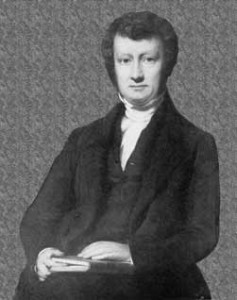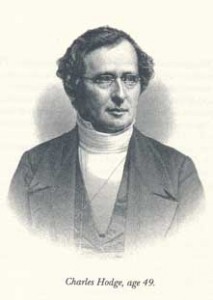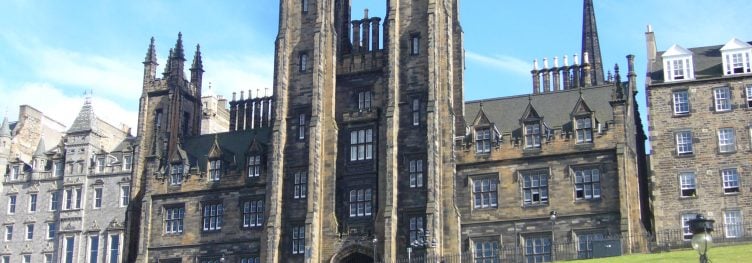On 4 July 1843, Revd Dr William Cunningham was one of five professors recommended for service to the New College that the Free Church of Scotland, having recently broken away from the Church of Scotland, was establishing for theological training (one of them, Dr Black, was to serve in Aberdeen, the four others in Edinburgh). Before the present New College building was opened in late 1850 or its foundation stone laid in 1846, the college would begin meeting in a house purchased at 80 George Street. But Cunningham’s work for New College in late 1843 would lead him far from Edinburgh.

Cunningham was commissioned to visit the United States to investigate “…the constitution and working of some of the most eminent of the American Theological Institutions…” (Watt & Hunter 10–11). Why should he go? Probably because he had just been in the United States the previous year, having had the degree Doctor of Divinity conferred upon him by none other than Princeton (It was his only degree, and he understandably asked for a formal diploma which cost him $4.25) (Rainey & MacKenzie 182). And to Princeton he would return, leaving for America 18 December 1843.

It is not clear to me what if anything Cunningham may have gleaned from the institutions that was applied to the establishment of New College. In any case, it is clear that he was fond of Princeton and especially Charles Hodge. Cunningham, in a letter to his wife, wrote:
As I have not much public business till next week, I have come out to spend a few days in Princeton. I have had great pleasure in the society of the theological professors here, who are all men eminent for their talents and learning, and are known in Britain by their writings. I am staying with Dr Hodge—a very admirable and estimable man, whose wife is a great grand-daughter of Dr [Benjamin] Franklin. There is another thing which makes this place very interesting. It is the place where Jonathan Edwards and Witherspoon, who were both presidents of the college, lived and laboured. I have visited the place where they lived and died, and the place where they were buried. (Rainey & MacKenzie 205)

One thing Cunningham certainly did bring back to New College from America was money–at least £3,000 in donations (Rainey & MacKenzie 208). He worked hard for this during the course of his visit (which lasted until 1 May 1844):
Almost every Sabbath he preached three times, and he addressed nearly forty public meetings in New York, Philadelphia, Boston, Richmond, Baltimore and many other places. (Rainey & MacKenzie 204)
He was even slated to speak before Congress (but was unable due to illness) and attended one of the President’s levees (on 27 Feb 1844, for the day following, according to Cunningham, was the USS Princeton disaster which killed a few of those Cunningham had met that at the levee; whether he met President John Tyler, I would like to know).
So there you have it: An early American link to New College, Edinburgh.
[This is an expansion my previous post.]
—————————————
Hugh Watt and A. Mitchell Hunter, New College Edinburgh: A Centenary History (Edinburgh: Oliver and Boyd, 1946).
Robert Rainy and James Mackenzie, Life of William Cunningham (London: T. Nelson & Sons, 1871). Available in full from Google Books.
